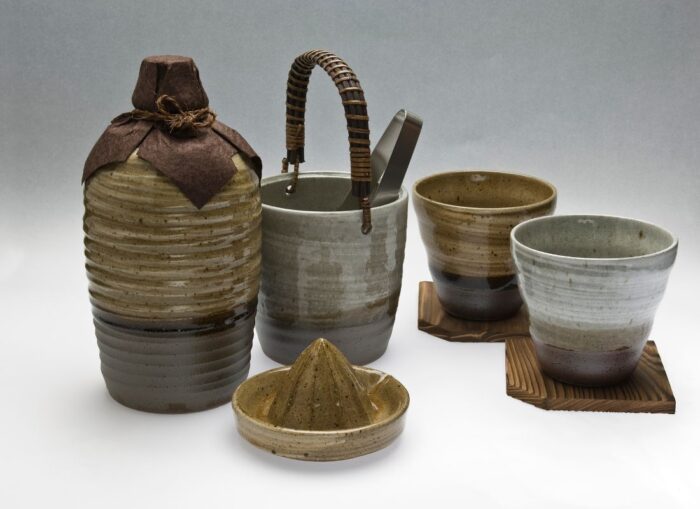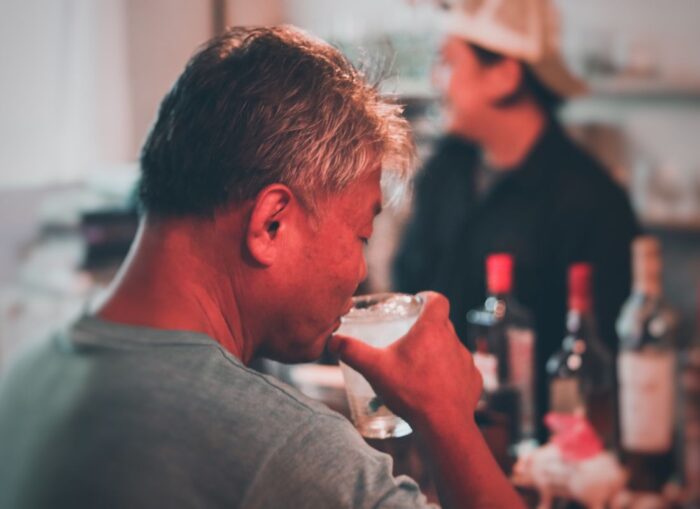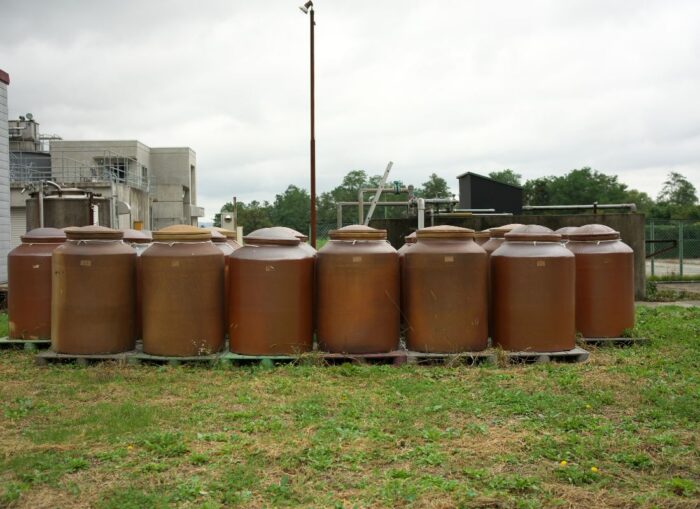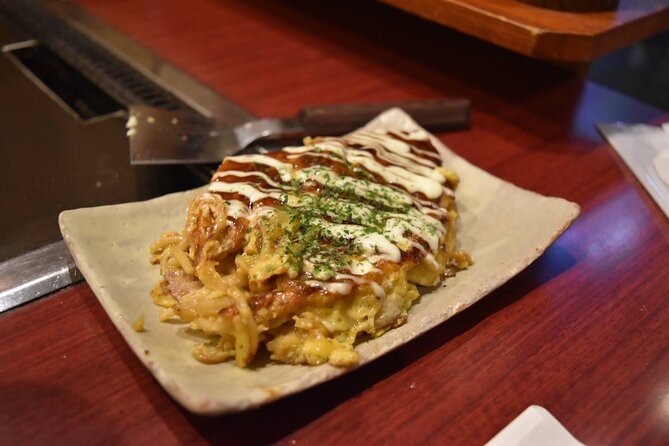While Japanese whisky and sake may be better known outside of Japan, the country’s national spirit is actually shochu. This distilled beverage has been enjoyed in Japan for centuries and comes in a variety of styles and flavors. In this guide, we’ll take a closer look at what shochu is, how it’s made, and the different types of shochu that are available.
What is Shochu?

Shochu is a distilled beverage that is made from a variety of ingredients, including rice, barley, sweet potato, and other grains. Unlike sake, which is brewed like beer, shochu is distilled like whiskey or vodka, giving it a higher alcohol content.
How is Shochu Made?
Shochu is made through a process of distillation, in which a fermented mash is heated to separate the alcohol from the solids. The resulting liquid is then aged to develop its flavor and aroma. Depending on the type of shochu, it may be distilled multiple times or aged in different types of casks.
Types of Shochu
There are many different types of shochu, each with its own unique flavor and aroma. Here are some of the most common types of shochu:
- Imo shochu: Made from sweet potatoes, imo shochu is one of the most popular types of shochu in Japan. It has a rich and complex flavor, with notes of caramel and nuttiness.
- Mugi shochu: Made from barley, mugi shochu has a lighter and more delicate flavor than imo shochu. It is often enjoyed chilled or on the rocks.
- Kome shochu: Made from rice, kome shochu is similar in flavor to sake. It is often enjoyed warm or hot, especially during the colder months.
- Kokuto shochu: Made from brown sugar, kokuto shochu has a sweet and rich flavor. It is often enjoyed as a dessert drink or after-dinner digestif.
Shochu is typically enjoyed in small quantities, either straight or mixed with water or ice. It is also often used as a base for cocktails and mixed drinks, and can add a unique flavor and depth to a variety of cocktails.
Types of Japanese Shochu: From Imo to Mugi and Beyond

Japanese shochu is made from a variety of ingredients, including sweet potatoes, barley, and rice, shochu comes in many different styles and flavors.
Here are a few of the most common types of shochu, and what sets them apart from one another.
Imo Shochu
Imo shochu is perhaps the most well-known and popular type of shochu in Japan. Made from sweet potatoes, imo shochu has a rich and complex flavor, with notes of caramel and nuttiness. It is typically enjoyed straight or on the rocks, and is also used as a base for cocktails and mixed drinks. Some of the most famous imo shochu brands include Kuro Kirishima, Satoh, and Zuisen.
Mugi Shochu
Mugi shochu is made from barley, and has a lighter and more delicate flavor than imo shochu. It is often enjoyed chilled or on the rocks, and is also used as a base for cocktails and mixed drinks. Some of the most well-known mugi shochu brands include Iichiko, Zansho, and Yamanomori.
Kome Shochu
Kome shochu is made from rice, and has a flavor profile that is similar to sake. It is often enjoyed warm or hot, especially during the colder months, and is also used as a base for cocktails and mixed drinks. Some of the most famous kome shochu brands include Shiranami, Hakutake Shiro, and Rihaku.
Kokuto Shochu
Kokuto shochu is made from brown sugar, and has a sweet and rich flavor. It is often enjoyed as a dessert drink or after-dinner digestif, and is also used as a base for cocktails and mixed drinks. Some of the most famous kokuto shochu brands include Ryukyu Awamori, Sanpin Shokuhin, and Hanazake.
Awamori
Awamori is a type of shochu that is unique to the Okinawa prefecture in Japan. It is made from long-grain rice, and has a strong and complex flavor profile. Awamori is often aged in traditional earthenware jars, which give it a distinctive aroma and flavor. Some of the most famous awamori brands include Zuisen, Kumesen, and Shimauta.
Honkaku Shochu
Honkaku shochu is a type of shochu that is made using traditional methods and ingredients. It is typically distilled only once, which gives it a distinctive flavor and aroma. Honkaku shochu is often enjoyed straight or on the rocks, and is also used as a base for cocktails and mixed drinks. Some of the most famous honkaku shochu brands include Satoh, Zuisen, and Komaki Shuzo.
How to Drink Shochu

Shochu is a unique and complex distilled spirit that is enjoyed by people all over Japan and beyond. Shochu has a distinct flavor and aroma that can be enjoyed on its own or mixed with other ingredients. So let’s next take a closer look at how to drink shochu, from the traditional ways to enjoy it to some modern and creative cocktails that showcase the spirit’s versatility.
Drinking Shochu Straight
One of the most traditional and popular ways to drink shochu is to enjoy it straight, without any additional mixers or ingredients. Shochu is typically served in a small glass, called an ochoko, and is meant to be sipped and savored slowly. To fully appreciate the complex flavors and aromas of shochu, it’s recommended that you drink it at room temperature or slightly chilled. Many shochu enthusiasts also recommend trying different types of shochu to discover which ones you like best.
Rokku
Rokku is short for “on the rocks” and it’s my personal favorite way to drink my imo shochu. With one or 2 ice cubes in a cup the shochu is poured over. You can add some water or just wait for some of the ice to melt.
Mixing Shochu with Water or Soda
While shochu can be enjoyed straight, it’s also common to mix it with water or soda water to create a refreshing and easy-to-drink cocktail. When mixing shochu with water, it’s generally recommended to use a ratio of one part shochu to three parts water. This helps to bring out the delicate flavors and aromas of the shochu, while also making it more drinkable for those who prefer a lighter taste. Shochu can also be mixed with soda water and ice for a refreshing and effervescent cocktail.
Shochu Cocktails
For those who like to experiment with their drinks, shochu is a great spirit to use in cocktails. The unique flavor and aroma profile of shochu makes it a versatile base for a variety of different cocktails. Some popular shochu cocktails include the Chu-Hai, which is made with shochu, soda water, and a variety of different fruit juices; the Shochu Sour, which is made with shochu, lemon juice, and simple syrup; and the Shochu Bloody Mary, which is made with shochu, tomato juice, and spices.
Pairing Shochu with Food
Shochu is a great spirit to pair with food, particularly heartier and more robust dishes. Some common food pairings for shochu include grilled meats, stews, and fried foods. The strong, complex flavor of shochu helps to complement and enhance the flavors of the food, while also providing a refreshing and palate-cleansing effect.
Whether you prefer to drink it straight, mixed with water or soda, or in a creative cocktail, shochu is a unique and versatile spirit that is enjoyed by people all over Japan and beyond. By taking the time to appreciate the complex flavors and aromas of shochu, and experimenting with different ways to enjoy it, you can discover a whole new world of drinking pleasure.
The Rich History of Japanese Shochu: From Ancient Times to Modern Day
Shochu is a unique and fascinating distilled spirit that has been enjoyed in Japan for centuries. With a history that dates back to ancient times, shochu has played an important role in Japanese culture and society, and has evolved over the years to become the diverse and complex spirit that it is today.
Next is a brief history of Japanese shochu, and how it has evolved over the centuries.
Ancient Times
The origins of shochu can be traced back to ancient times, when the Japanese would make a crude form of distilled spirit from rice and other grains. This spirit was known as “doburoku,” and was often made in small batches by farmers and other rural residents. Over time, the techniques and methods used to make doburoku evolved, eventually leading to the creation of shochu.
The Edo Period
The Edo period, which lasted from 1603 to 1868, was a time of great innovation and development in Japan. During this period, shochu began to gain popularity as a more refined and sophisticated form of distilled spirit. It was during this time that the first shochu distilleries were established, and the methods used to make shochu began to evolve and improve. Many of the traditional shochu brands that are still popular today were established during the Edo period.
The Modern Era
After World War II, the popularity of shochu began to decline as the Japanese began to embrace other types of spirits, such as whiskey and beer. However, in the 1980s, shochu experienced a resurgence in popularity, as younger generations began to appreciate the unique and complex flavors of this fascinating spirit. Today, shochu is once again a beloved and integral part of Japanese culture, and is enjoyed by people of all ages and backgrounds.
How Is Japanese Shochu Made? A Guide to the Distillation Process

Japanese shochu is a unique and complex distilled spirit that is enjoyed by people all over the world. Made from a variety of different ingredients, including rice, barley, and sweet potatoes, shochu has a distinct flavor and aroma that is unlike any other spirit.
So let’s take a closer peak into how Japanese shochu is made, from the initial fermentation process to the final distillation and bottling.
Ingredients
One of the most fascinating things about shochu is the wide variety of ingredients that can be used to make it. While the most common ingredients are rice, barley, and sweet potatoes, other ingredients such as buckwheat, brown sugar, and chestnuts can also be used. The specific ingredients used will vary depending on the type of shochu being made, as well as the region in which it is produced.
Fermentation
The first step in making shochu is the fermentation process. The specific method used to ferment the ingredients will vary depending on the type of shochu being made, but in general, the ingredients are mixed with water and koji (a type of fungus) to begin the fermentation process. The mixture is left to ferment for several days, during which time the yeast converts the sugars in the mixture into alcohol.
Distillation
After the fermentation process is complete, the mixture is distilled to create the final shochu product. The specific method used to distill shochu will vary depending on the type of shochu being made, but in general, the mixture is heated in a pot still, and the resulting vapor is condensed and collected in a separate container. This process is repeated several times, resulting in a more concentrated shochu with a higher alcohol content.
Bottling
After the distillation process is complete, the shochu is ready to be bottled and consumed. In general, shochu is bottled at a relatively low alcohol content (typically around 25% ABV), which makes it easy to drink and mix with other ingredients. Some shochu producers will also age their shochu in wooden barrels for several months or years, which can impart additional flavors and aromas to the final product.
Famous Japanese Shochu Regions: From Kyushu to Shikoku
While shochu can be found throughout Japan, there are certain regions that are particularly famous for their production of this unique distilled spirit. From the volcanic soil of Kyushu to the rugged coastline of Shikoku, each region has its own unique terroir that contributes to the distinct flavor and aroma of shochu.
Let’s take a closer look at some of the most famous shochu regions in Japan.
Kyushu
Kyushu is one of the most famous shochu regions in Japan, and is particularly well-known for its production of imo shochu. The volcanic soil in this region is said to give the sweet potatoes used to make imo shochu a distinctive flavor and aroma. Some of the most famous shochu brands from Kyushu include Kuro Kirishima, Zuisen, and Satoh.
Kagoshima
Kagoshima is a prefecture on the southern tip of Kyushu, and is particularly famous for its production of sweet potato shochu. The rich volcanic soil in this region is said to give the sweet potatoes a distinct sweetness and flavor. Some of the most famous shochu brands from Kagoshima include Satsuma Shuzo, Shiratake, and Takahashi Shuzo.
Oita
Oita is another prefecture in Kyushu that is famous for its shochu production. The barley shochu from this region is particularly well-regarded, and is known for its delicate and refreshing flavor. Some of the most famous shochu brands from Oita include Nishi Yoshida Shuzo, Yufuin Shuzo, and Yamamoto Shuzo.
Kochi
Kochi is a prefecture on the island of Shikoku, and is famous for its production of kome shochu. The rice used to make kome shochu in this region is said to have a particularly high starch content, which contributes to its unique flavor and aroma. Some of the most famous shochu brands from Kochi include Monde Shuzo, Nishioka Shuzo, and Kuroki Shuzo.
Miyazaki
Miyazaki is a prefecture on the eastern coast of Kyushu, and is known for its production of kokuto shochu. The brown sugar used to make kokuto shochu in this region is said to have a particularly complex flavor profile, with notes of molasses and caramel. Some of the most famous shochu brands from Miyazaki include Hayashi Shuzo, Hamada Shuzo, and Uehara Shuzo.
Japanese Shochu vs. Sake: What’s the Difference?

Japanese shochu and sake are two of the most popular and beloved distilled spirits in Japan. While they share some similarities, such as their use of rice and other grains in the production process, they are distinct and unique spirits with their own flavors, aromas, and production methods.
Ingredients
One of the key differences between shochu and sake is the ingredients used to make them. While both spirits use rice in the production process, shochu can also be made from other ingredients, such as barley, sweet potatoes, and buckwheat. Sake, on the other hand, is made exclusively from rice, which is polished to remove the outer layers of the grain before fermentation.
Fermentation and Distillation
Another key difference between shochu and sake is the fermentation and distillation process used to make them. Sake is made through a process of multiple parallel fermentation, where the starches in the rice are first converted into sugar, and then into alcohol. Shochu, on the other hand, is made through a process of simultaneous fermentation and distillation. The resulting spirit is typically more concentrated and has a higher alcohol content than sake.
Flavor and Aroma
Perhaps the biggest difference between shochu and sake is the flavor and aroma profile of each spirit. Sake is known for its delicate, clean, and often fruity flavors, with a subtle aroma that is often described as “ricey” or “floral.” Shochu, on the other hand, can have a more complex and varied flavor profile, depending on the ingredients used and the production methods employed. Some shochu is characterized by a bold and earthy flavor, while others have a more refined and subtle taste.
Usage and Pairing
While both shochu and sake can be enjoyed on their own or mixed with other ingredients, they are often paired with different types of food. Sake is traditionally paired with Japanese cuisine, particularly dishes that feature seafood or light flavors. Shochu, on the other hand, is often paired with heartier, more robust dishes, such as grilled meats and stews. Shochu is also often enjoyed on its own or mixed with soda water, whereas sake is typically consumed straight or warmed.
The Sum Up
Whether you’re a long-time shochu enthusiast or a newcomer to the world of Japanese spirits, exploring the famous shochu regions of Japan is a must-do experience. From the volcanic soil of Kyushu to the rugged coastline of Shikoku, each region has its own unique terroir that contributes to the distinct flavor and aroma of their shochu.
There are the rich and complex flavors of imo shochu and the delicate and refreshing notes of mugi shochu, and you could say there is a shochu to suit every taste and occasion.
From its humble beginnings as a crude form of distilled spirit, to its status as a beloved and integral part of Japanese culture, the history of shochu is a rich and fascinating one. So next time you’re enjoying a glass of shochu, take a moment to appreciate the centuries of history and tradition that have gone into making this fascinating distilled spirit what it is today.




